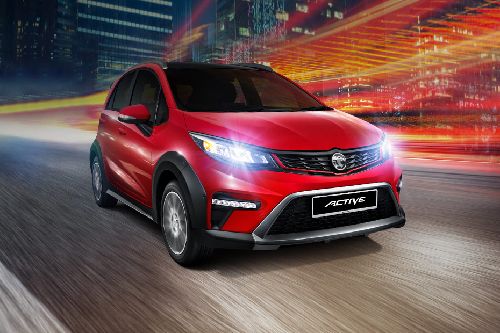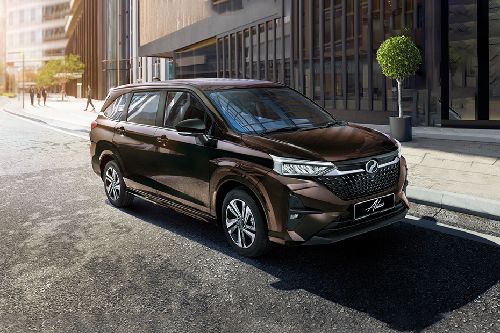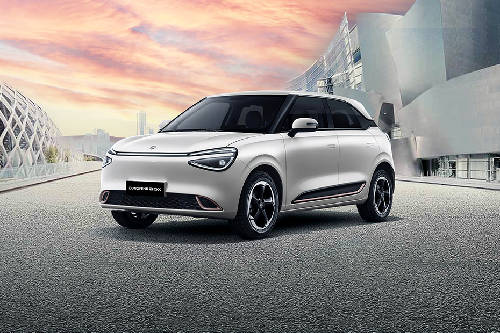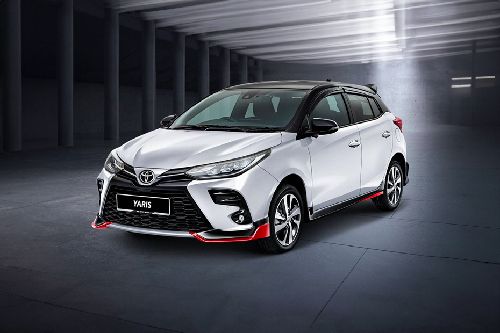Perodua Myvi or Proton Iriz - Which One?

If you realise, Proton and Perodua, the two homegrown brands never speak about how they want to dethrone the other. In a recent interview, the CEO of Proton said that they aren’t looking to compete with Perodua at all. In fact, it is the Japanese that are their prime competitors. Big words considering the technological know-how for cars from both these manufacturers come from Suzuki and Toyota respectively. However, a face-off is inevitable as both the manufacturers offer their products in the same space and the eventual competition happens. The question today is about the entry-level products that offer a good amount of space, decent engines, and a lower price point. They are the Perodua Myvi and the Proton Iriz. Let’s find out which of these you should opt for.
Looks

Both are B-segment hatchbacks. The Proton Iriz measures 3,920 mm in length, 1,722 mm in width, and 1,554 mm in height. The wheelbase is measured at 2,555 mm. It looks contemporary and there was a time when Proton thought that the Iriz will put the sales chart on fire but it sadly didn’t. The lack of features and the slightly higher price tag is what keeps it away from the buyers. All this have slightly changed now and the Proton Iriz looks contemporary. The four wheels pushed to the absolute corners look very nice and so do those projectors and LED lights. The large glass area at the back too helps a great deal when it comes to all around visibility.

The Perodua Myvi in the meanwhile looks more stylish. It has a larger hood and feels bigger as well. The Myvi measures 3,895 mm x 1,735 mm x 1,515 mm in the length, width, and height columns. This makes it smaller than the Iriz. Appearances can often be deceptive stands true here. We like the side skirt treatment given to the Perodua here. The 15-inch dual tone alloys also look nice. Overall, it is a much more cohesive design than that of the Iriz. A reason for its higher sales, maybe?
Interior
The cabin of both the cars is contemporary enough and come with nearly the same features too. There is a touchscreen infotainment system, height adjustable driver’s seat, height adjustable seat belts, soft-touch dashboard, and multiple cups as well as bottle holders. Interior space is better in the Proton Iriz than the Perodua Myvi by a small margin. This is noticeable, especially at the rear. With three sitting abreast, the Iriz makes sense. Luggage space though is better in the Myvi. We liked the music system of the Myvi as the one in the Iriz is a bit laggy to operate and the sound quality seems a bit stifled as well.

Build quality wise the Perodua seems a bit better put down together than the Iriz. On its own, the Iriz seems well joined but then there are a few uneven panel gaps which don’t leave a very lasting impression about the quality. The Myvi has tight shut lines and seems that it will endure the test of time well enough.
Engine and transmission
Both borrow engines from Suzuki and Toyota. In the Myvi, Perodua uses petrol 1.3-litre and 1.5-litre engines. From the 1.3-litre naturally aspirated engine, Perodua milks out 95 PS of power and 121 Nm of torque. The company offers this engine both with a 5-speed manual and four-speed torque converter. Out of the bigger 1.5-litre motor, Perodua massages 103 PS of power and 136 Nm. This engine can be optioned only with the automatic and comes with Eco start/stop too. This aids in efficiency.

Proton uses 1.3-litre and 1.6-litre petrol engines. Both these engines are four-cylinder units. The 1.3-litre motor is good for 94 PS of power and 120 Nm of torque. One can option this motor with a 5-speed manual gearbox or a CVT. For the 1.6-litre engine, the power figure is 107 PS while the torque is 150 Nm. This engine can be ordered only with the CVT. It is quite apparent here that the Proton has power on its side while with the stop-start tech, the Myvi has got the efficiency covered.
Safety
If you have seen Proton’s recent advertisements, they scream affordable safety. By this, the company wants customers to understand that the safety features don’t really have to there only on top-spec cars. It can also be made available in lower rung cars. To that effect, on the Iriz, Proton offers six airbags with the 1.6-litre engine whereas dual airbags and ABS along with EBD are standard across the range. Electronic stability control along with traction control too are standard. ISOFIX child seat mounts, dual seatbelt pre-tensioner with load limiter and reverse sensors too are offered. On top trims, a reverse camera is also part of the equipment list.

In contrast, Perodua too offers six airbags, front and rear sensors, reverse camera, ABS with EBD, advanced safety assist, Vehicle Stability Control, Hill Assist, and ISOFIX points. Both are evenly matched when it comes to the safety stakes then. The two vehicles have scored a four-star rating in the GNCAP crash tests too.
Verdict
Price plays a huge role in the way a car is usually perceived. In spite of being a good product, because of its higher price tag, we have seen folks give the Toyota C-HR a skip. Same is the case here.
Prices of the Proton Iriz start from RM 40,012 and go all the way to RM 53, 751. In the meanwhile, the Perodua Myvi is priced from RM 41, 807 and shoots till RM 52, 186. This clearly seals the deal in favour of the Perodua and is the one we will recommend as well. Unless you specifically want just the top spec Iriz and nothing else, the Myvi is a better car in every sense. Trust the lakhs of Malaysians who have bought the car and still continue to do so every month.
Sell your car at the best price
 Verified and genuine buyers
Verified and genuine buyers
Perodua Myvi vs Proton Iriz Comparison
Perodua Car Models
Don't Miss
Trending & Fresh Updates
- Latest
- Popular
You might also be interested in
- News
- Featured Stories
Perodua Featured Cars
- Upcoming
- Popular
Compare & Recommended

|

|

|
|
Seating Capacity
5
|
5
|
5
|
|
Engine
1329
|
1332
|
998
|
|
Power
94
|
94
|
67
|
|
Transmission Type
CVT
|
CVT
|
Manual
|
|
|
Trending Hatchback
- Latest
- Upcoming
- Popular




















































